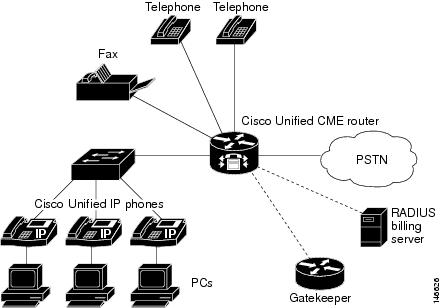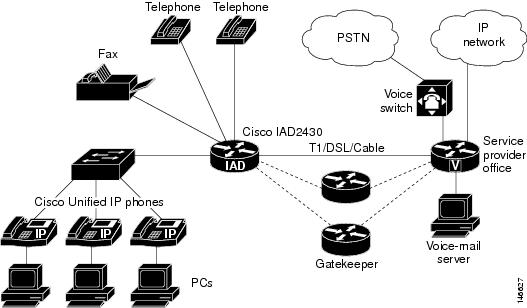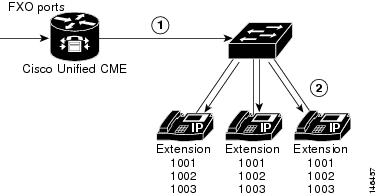This release introduces a new paradigm for tracking license usage across your business. In earlier releases, license authorization
was forward-looking, binding licenses to a device until the next authorization request. Actual license usage during the proceeding
reporting period is now sent to CSSM, allowing you to plan ongoing license requirements based on historical usage data.
Initial device registration is no longer required to use most platform functionality and the evaluation period is deprecated.
License usage reports are submitted periodically according to a minimum reporting policy set for your account. Typically,
this period could be once per year. However, you can generate reports more frequently if the use of licensed features varies
over time. CSSM acknowledges each Resource Utilization Monitoring (RUM) report to ensure that the usage is recorded reliably.
If the router does not receive an acknowledgment within the minimum reporting period, call processing is disabled. Call processing
is resumed when a valid acknowledgment is received.
Reports can be submitted to CSSM directly or through a satellite. Cisco Smart Licensing Utility (CSLU) applications can also
receive usage reports, providing you with more flexibility in managing your license usage. Also, when a device is not able
to communicate directly with a licensing server, a signed usage report can be generated and manually uploaded to CSSM. You
must upload the CSSM generated acknowledgment to the device within the license reporting policy period to ensure continued
use.
As license reporting is now based on historical usage, the registration process that is used previously has been replaced
with a trust association that also defines the reporting policy set in your account. Establishing trust with CSSM or Cisco
Smart Software Manager Satellite uses an identity token similar to earlier registrations. Use the license smart trust idtoken
token command to establish the trust relationship within the initial reporting period set for the device. The CLI license smart register command is deprecated from this release.

Warning
|
When using any of the following releases, Unified CME shuts down if the router does not receive a report acknowledgment from
CSSM before the acknowledgment deadline set by the account policy: 17.3.2, 17.3.3, 17.3.4a, 17.6.1a, or any 17.4 or 17.5 release.
Unified CME does not shut down in this way with later releases.
|

Note
|
-
Smart License Reservation (SLR) for Unified CME licenses is not compatible with Cisco IOS XE Amsterdam 17.3.2 and later releases. Even if a reservation is in place when upgrading to one of these releases, license use reporting is still
required in accordance with the device policy.
-
The enhancements that are made for Cisco IOS XE Amsterdam 17.3.2 and Cisco IOS XE Bengaluru 17.4.1a are not available for Cisco CSR 1000V.
|
Current license usage for Cisco Unified Communications Manager Express is displayed using the show license summary command:
Router(config)#do sh license summary
License Usage:
License Entitlement tag Count Status
appxk9 (ISR_4400_Application) 1 IN USE
uck9 (ISR_4400_UnifiedCommun...) 1 IN USE
securityk9 (ISR_4400_Security) 1 IN USE
CME_EP (CME_EP) 2 IN USE
Cisco Unified Border Element (CUBE) session licenses are required along with CME license specifically for SIP trunking flows.
The following are the SIP trunk call flow examples that trigger CUBE session license reporting:
-
SIP/SCCP Unified CME registered IP phones making calls through a SIP dial-peer towards another Unified CME.
-
SIP/SCCP Unified CME registered IP phones making calls through a SIP dial-peer towards a CUCM.
-
SIP/SCCP Unified CME registered IP phones making calls through a SIP dial-peer towards a third-party IP PBX.
-
SIP/SCCP Unified CME registered IP phones making calls through a SIP dial-peer towards a SIP ITSP.
Use the show voice sip license stats command to verify the CUBE license usage status and license usage history:
The following example outputs are truncated to display 60-second and 60-minute tables only. Usage is recorded based on the
peak value of concurrent calls for a defined interval of time.
Router# show voice sip license stats table
02:50:16 PM Wednesday Nov 13 2019 UTC
CUBE Trunk License Usage (last 60 seconds)
Period Average Max
----------------------------
1-5 0 0
6-10 0 0
11-15 0 0
16-20 0 0
21-25 0 0
26-30 0 0
31-35 0 0
36-40 0 0
41-45 0 0
46-50 0 0
51-55 0 0
56-60 0 0
CUBE Trunk License Usage (last 60 minutes)
Period Average Max
----------------------------
1-5 0 0
6-10 0 0
11-15 0 0
16-20 0 0
21-25 0 0
26-30 0 0
31-35 0 0
36-40 0 0
41-45 0 0
46-50 324 900
51-55 343 899
56-60 292 600
For more license usage examples, refer to CUBE Smart Licensing.







 Feedback
Feedback